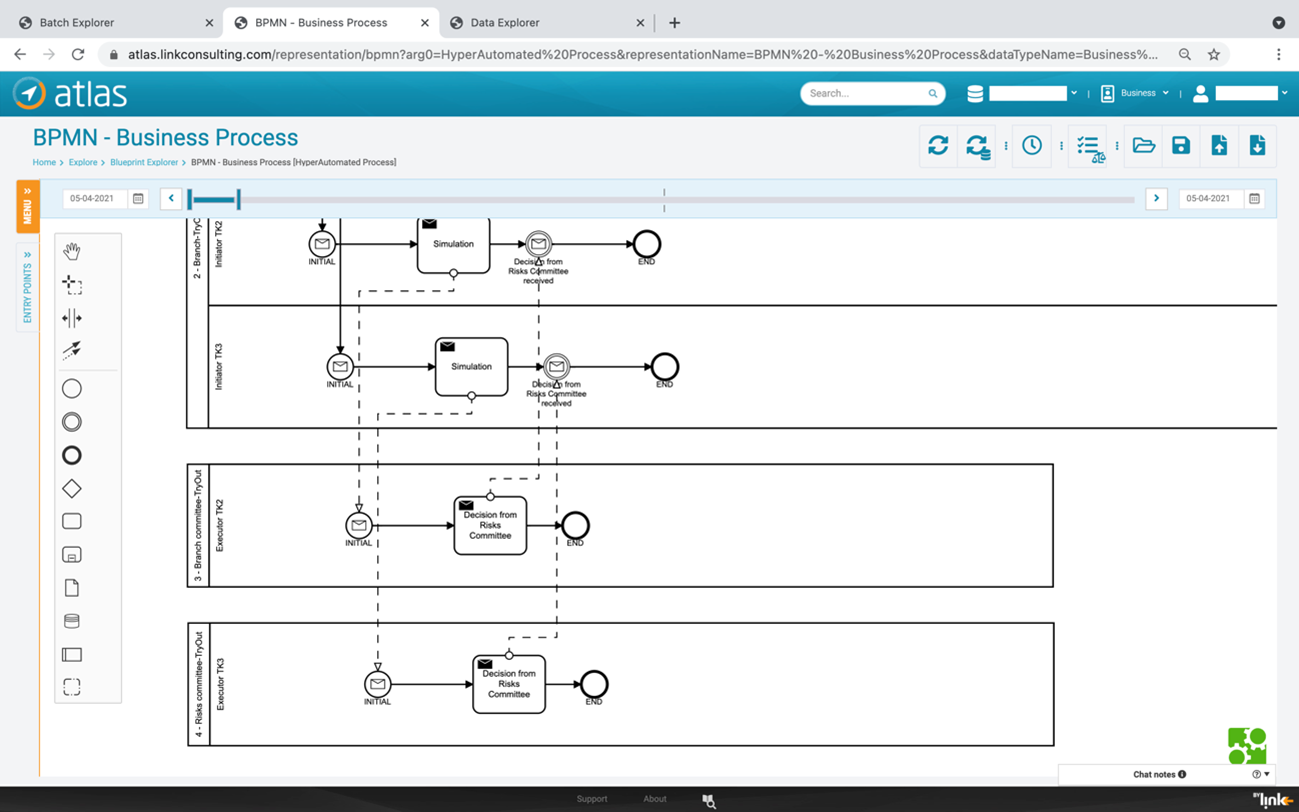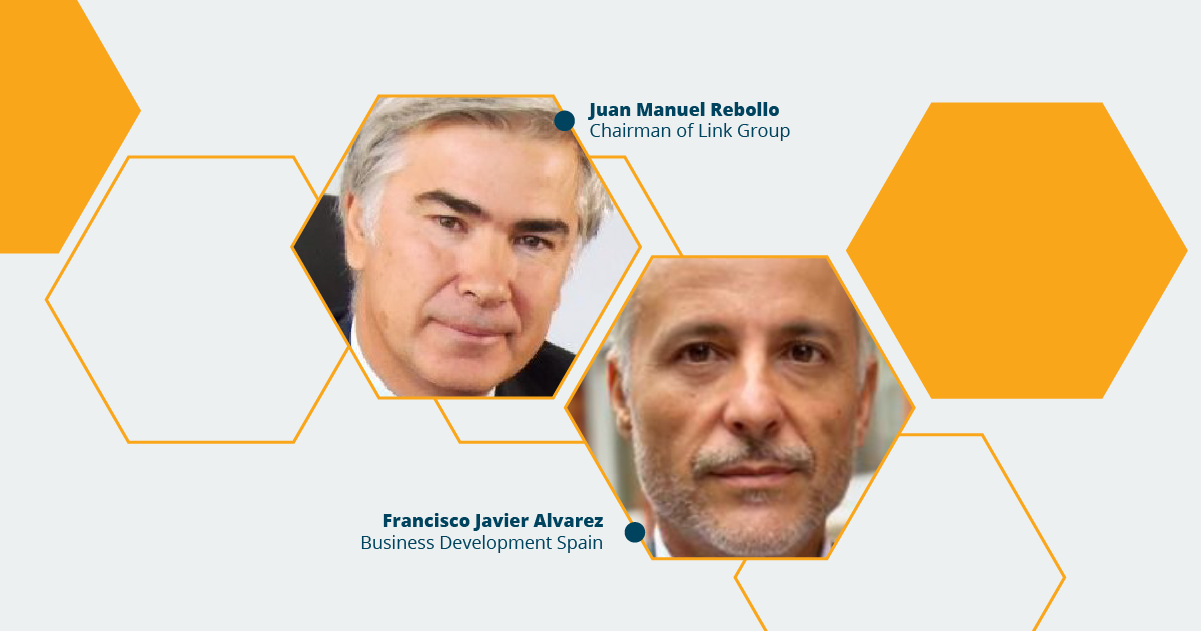Hyperautomation to facilitate the remote work environment
The increasing demand for business processes automation is leveraging the offering of new hyperautomated solutions that can minimize the time to market for deploying complex business processes. Hyperautomated solutions are facing a challenging landscape. On the one hand, business processes requirements changes are continuously imposed, and fast adaptations are expected to maintain their value. On the other hand, to be compliant with those evolving requirements, a huge number of possible design combinations for complete business processes are possible. The explosion of the number of those possible combinations hinders its development, management, and deployment. To avoid the impact of this combinatorial effect in the organization budget, only the simplest business processes scenarios are considered, and other advanced forms of exception handling are postponed to the implementation phase or even disregarded. To make it even more challenging, teams are working remotely, and all the collaboration, discussion, design and transformation need to be done in a distributed manner.
The usual solution encompasses a sequential and manual process of elicitation and design of the most relevant business processes using a business dependent language. A high-level design is produced containing a partial view (also named as the “happy flow”) of the enterprise operation. Then, business processes are implemented in a software platform using a technology-dependent language. At this stage, revocations, declinations, rejections, and others non “happy flow” patterns are adhoc included with a huge increase in complexity and unmanageability. Moreover, whenever a change in the implementation is needed, it turns too tricky to trace it back to the initial business definition. Concomitantly, a change in business does not trace back to the implementation. A re-elicitation, re-design and re-implementation are required. The effort consumed with these non-integrated solutions is high and not controlled in terms of costs.
Our solution offers a business processes models automatic completion, in a systematic manner, so that models can describe far more situations with few extra managed complexity. ATLAS hyperautomated solution natively copes with change. It can accelerate the modelling and enhance the organization’s complex business processes portfolio whenever any operational condition changes. It encompasses a two stages solution that is demonstrated herein, firstly the business process discovery and secondly the business process enrichment. ATLAS from Link Consulting [1] is the product that supports this solution grounded on the new abilities offered by the business processes semantics theory [3].
Business process discovery captures the specific details from the business perspective using a simplified business language composed only by the involved actors, the activities each actor is responsible for, and the events triggering the collaboration between actors. A collaborative canvas facilitates the drag and drop of elements directly to any actor (see Figure 1) without the need to learn a new specification language. The provided detail in this collaborative canvas is used to discover the existing business transactions between actors on the fly automatically. Therefore, discovery facilitates creating a shared semantic understanding between the different business analysts of an organization. A change in business is only a matter of changing the canvas and re-generating the business transactions.
 Figure 1. ATLAS Collaborative canvas to capture the business elements.
Figure 1. ATLAS Collaborative canvas to capture the business elements.
Misalignments and misunderstandings are easier to identify and solve due to the simple representation used. On top of this, the discovery also enables the communication between business analysts working in remote environments, avoiding the exchange of business process models, but providing a single point of trust.
After that, the business process enrichment generates a business process model using the language most widely used by industry – the BPMN specification language [2] – combined with an inherited complete business process pattern [3]. This generated model shares a single interpretation between multiple business analysts and supports the execution of the business processes in any BPMN compatible engine (see Figure 2).
 Figure 2. ATLAS Automatic business process discovered from the elements of Figure 1.
Figure 2. ATLAS Automatic business process discovered from the elements of Figure 1.
Initially, the model discovered is only based on the elements previously captured, but it could be extended later by choosing the business analyst (see in Figure 3). That is why it is only required a controlled and known management effort to increase the complexity of the designed business processes.

Figure 3. ATLAS Business process enrichment, selecting the desired extensions to generate a new enriched model.
Furthermore, exceptions situations can be added to the model by request and on the fly. It is also recognized that BPMN defines clearly how to articulate its concepts but usually involves the investment of learning a new language that entails extra costs. With this approach learning BPMN is needless. In addition, BPMN does not guarantee that one model is complete. With the semantified pattern that we use, our solution delivers a full hyperautomated business process discovery and enrichment to be used in a remote work environment.
We are available to discuss how this solution can be used in the context of the business processes of your organization. Please contact us by email at hyperautomation@linkconsulting.com
SOURCES:
[1] ATLAS Link Consulting (2021). https://linkconsulting.com/linkconsulting/what-we-do/products/atlas8/
[2] BPMN 2.0.2 specification (2011). URL https://www.omg.org/spec/BPMN/2.0.2/PDF
[3] Guerreiro, S., & Sousa, P. (2020). A framework to semantify BPMN models using DEMO business transaction pattern, eprint=2012.09557, https://arxiv.org/abs/2012.09557
AUTHORS:
Sérgio Guerreiro, Enterprise Engineering; Enterprise Architecture at Link and Assistant Professor of Information Systems at Instituto Superior Técnico
Pedro Sousa, Atlas Director at Link. Associated Professor of Enterprise Architecture and Business Process Management and Engineering at Instituto Superior Técnico
José Teixeira, Financial Services Industry Director at Link
04/05/2021









